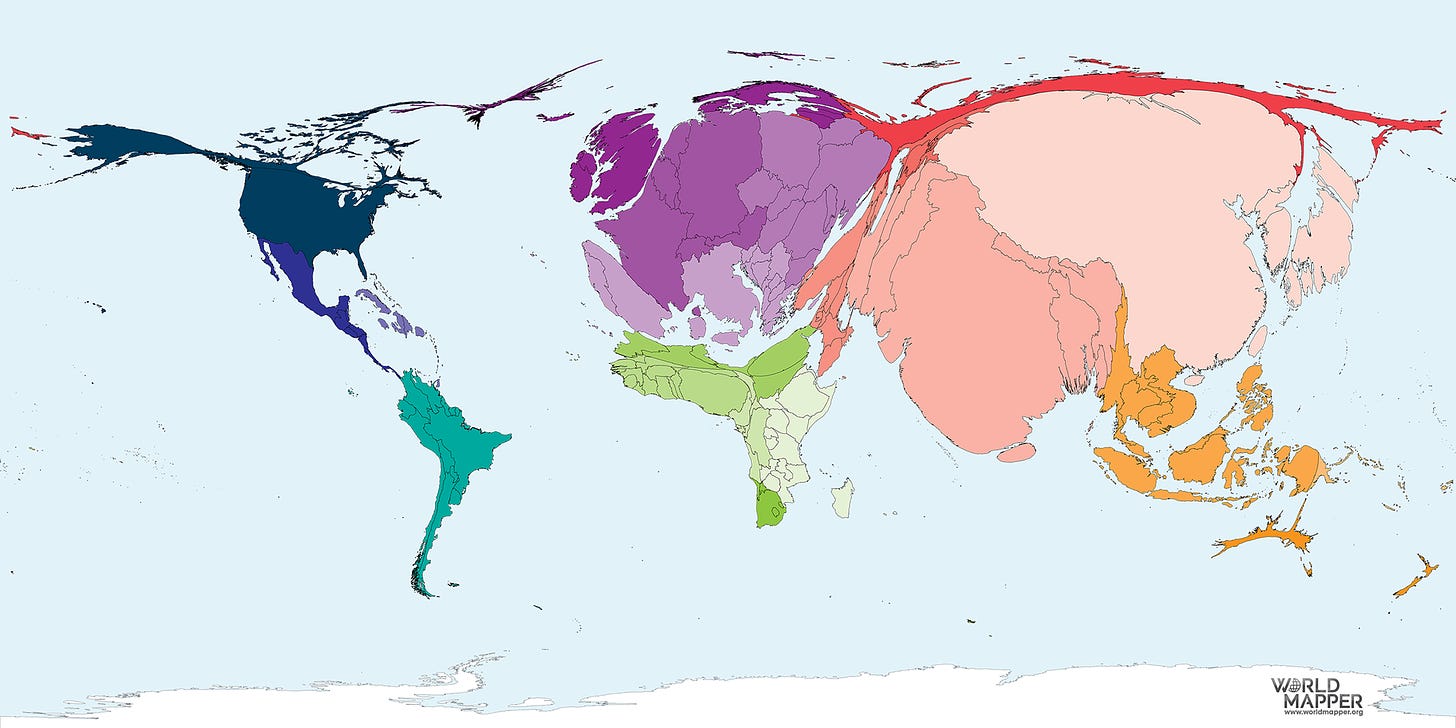In the late 19th c. - early 20th c. Europe was bursting with people. From Sicily to the Shetlands, from Lisbon to Lithuania it was generating endless human hordes that could not be comfortably settled or employed at home. The increase in population was putting the continent under the brutal demographic pressure1.
Strange it may sound today, the excess in population, specifically in the young population was seen as a problem back then. What could solve this problem, relieving the pressure and securing the socio-political stability? For the most part, emigration abroad2. That is how many thought on the edge of the 20th century.
The emigration where? - You may ask. Well, to the rest of the globe. Fortunately, overpopulation of the European continent was combined with the underpopulation of the rest of the planet. Yes, much of Asia was heavily populated even back then3. But the rest of the world was, by and large, inhabited very sparsely.
This is one example of the world demographic map in the year 1900. It shows why it came to the European continent pouring endless waves of immigrants all over the globe. Italians leaving to Argentina, the Germans to the United States, the Scots to New Zealand. All seeking escape from their overcrowded villages and townships in Europe.
Vagina gentium it was.
Europe was a chunky boy
There is no wonder that the mass European emigration created entirely new countries, new societies and new populations. In much of the New World and Oceania, the Europeans have almost fully replaced the natives. Whatever remains from the American Indians or Australian Aborigines is now absolutely dwarfed by the European descendants in terms of the sheer quantity4.
The population replacement in the Americas or in Australia looks intuitive, even if astonishingly cruel. The natives were relatively few. The settlers were numerous like ants, of almost infinite numbers5. There is little wonder that the local population had been easily overrun and replaced, thus creating a European majority society.
The Last of the Mohicans. Already in 1826, disappearance of the native was seen as natural, if sad. Sob story with an element of relief. Brutes gone, clearing the space for me and you.
What is less intuitive (from the perspective of today) is that the Europeans could very much hope to recreate the New World scenario in other parts of the globe, that we today do not associate with underpopulation. Examples include the MENA6 and, perhaps most surprisingly, the sub-Saharan Africa.
Keep reading with a 7-day free trial
Subscribe to kamilkazani to keep reading this post and get 7 days of free access to the full post archives.




